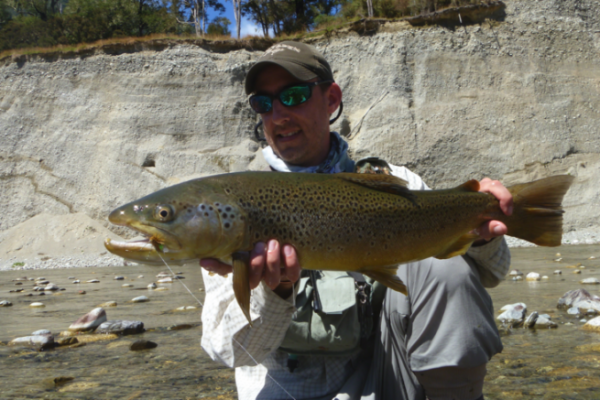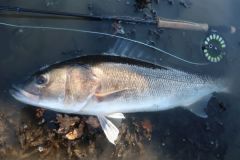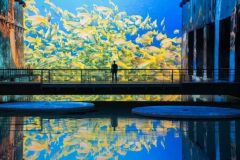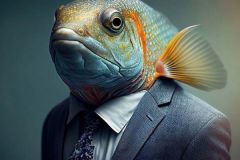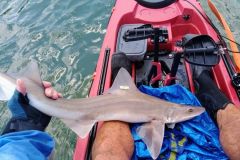Knowledge of aquatic environments
Each aquatic environment has its own distinct way of functioning. Whether it's a river, lake, pond, canal, sea or estuary, fish will behave in ways that you need to know and analyze to refine your fishing and make the right choices. Where to insist and where not to waste time? What time of day to choose, depending on the season? What type of food and fly to choose?
Each ecosystem is different. We need time to understand them and make the necessary deductions to fish effectively.
Books and the Internet provide their share of advice and information, but it's once again the field, the time spent on the water, that will enable us to adapt and know how and where to fish.
So we need to go fishing as often as possible to draw conclusions based on our successes and failures. There's no mystery about it: fishing is something you learn over time, and good fishermen are often people who devote time and effort to finding solutions.
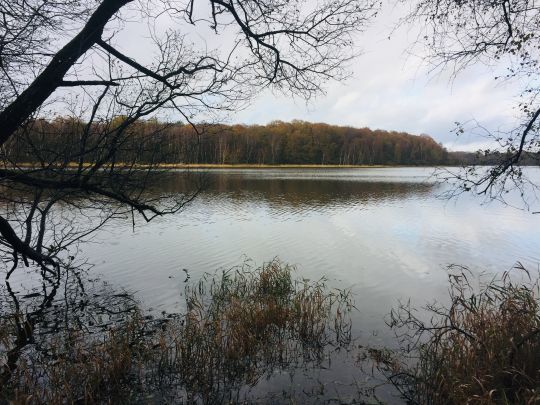
Know the needs of fish to adapt your fishing effort
Fish positions depend on their feeding activity and daily needs. Like all living beings, fish must first breathe and find sufficiently oxygenated water to live and develop according to their needs.
The higher the oxygen demand of fish, such as salmonids, the greater their need for fast, oxygenated water. They are often the first to be affected by low oxygen levels. But in any case, fish must first have this vital comfort before they can think about feeding.
Their metabolism will depend on the water temperature, as cold-blooded animals, temperature plays a vital role in their biological activity, and therefore in their feeding.
The colder the water, the less they feed, as their metabolism slows down. On the other hand, the warmer the water, the faster the digestion, but it still requires energy. Water that's too warm isn't ideal either, as the dissolved oxygen content is lower for respiration.
Each fish therefore has a thermal optimum, i.e. a temperature range within which it will be at its best, and will therefore be able to feed most often for its development and growth.
Reproduction also has an impact on the fish. Shortly before and during this phase, they stop feeding altogether. On the other hand, well before and especially after reproduction, they are often very active.
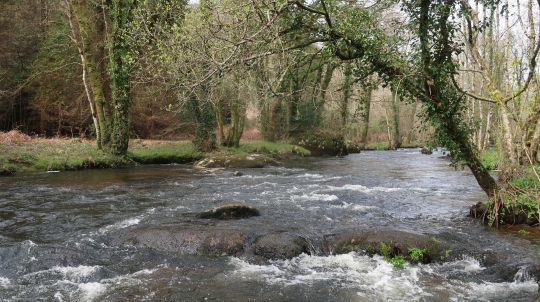
The importance of reading water
Water reading is acquired through time spent at the water's edge, even if certain books and websites can provide a good deal of information that should be verified in the field (see end of article)
Whether in enclosed waters (lake or pond), rivers or even the sea, knowledge of the environment in which the coveted fish are evolving is very important and allows you to better concentrate your fishing effort and save time and therefore catch more fish in fine more fish.
Observation over the course of our outings enables us to make the most of each of our fishing sessions. As we go along, we store up an enormous amount of data that enables us to make our choices and refine them on the water according to the conditions.
In the case of trout, grayling and chub, depending on the time of year, these fish will not be posted in the same place and will not feed on the same prey. As a result, their behavior changes and evolves according to their diet. Knowing where the fish are positioned according to the season, and therefore water levels and temperature, enables you to read a river like a book and fish efficiently.
In large rivers, it's all the more important to know how to read the "feeder" veins and identify the fish's behaviour so as not to have to fish every current or position. A seasoned eye will quickly detect where to insist and where to move on.
In medium and small rivers, reading the water will be "easier", but you'll save precious time if you know how to read the favorable spots. The paths of bubbles that drift along the surface and form the feeder veins that concentrate and bring insects. The front of the pebbles, the edges bordered by a slightly deeper current, a current between aquatic weeds, a small basin before a rapid, are all key positions.
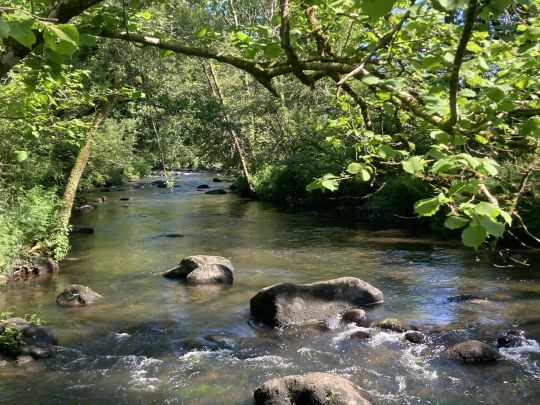
Improve your ability to identify fish positions
In lakes and ponds, whether for trout or carnivorous fish, knowledge of how these ecosystems work and how to read the water once again enable you to fish efficiently and concentrate your efforts on interesting areas where your opponents are positioned.
The depth and topography of the lake, water temperature, wind direction forming current veins are all clues that enable us to target the species we're looking for. Lake trout feed a lot on the edges, where the wind concentrates the food, often coming from the outside, and settle in the veins linked to the bottom or surface currents, but also on the points forming rich zones.
Pike, on the other hand, follow their prey and stay constantly close to their larder. It's often said: "find the forage fish and you'll find the predators". And it's true!
The spawning of certain fish such as carp, bream, roach and perch are also times when pike will approach certain spots to feed, as well as to hunt in the weed beds for frogs and other rodents that may be in the water at any time.
On large lakes, the thermocline has a major impact on fish behaviour. This layer of water, where thermal comfort is best suited to each species of fish, needs to be analyzed and found for fishing.
Ultimately, knowledge of the environment in which fish live and how they function helps us to fish better. Fishing is not just a hobby. It's a science in its own right, and goes far beyond throwing a lure into the water to catch a fish.
Luck may smile on us from time to time, but the experienced angler will always catch more fish if he asks himself the right questions, based on a detailed analysis of the conditions and needs of the fish he's after.
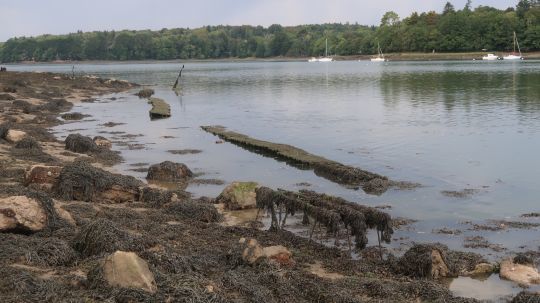
Ideas for interesting books on fish and the environment
Pike pike fly fishing by Jacky Roehrig
Carpe barry Renolds - Carp on the fly, a fly fishing guide âeuros Barry Renolds, John Berryman, Brad Befus (in English)
Bonefish randall Kauffman âeuros Bonefish - Western Fisherman's press
Shadow l'Ombre Biology and fly fishing by Charles Gaidy
Trout la truite de rivière biologie et pêche à la mouche by Charles Gaidy

 /
/ 